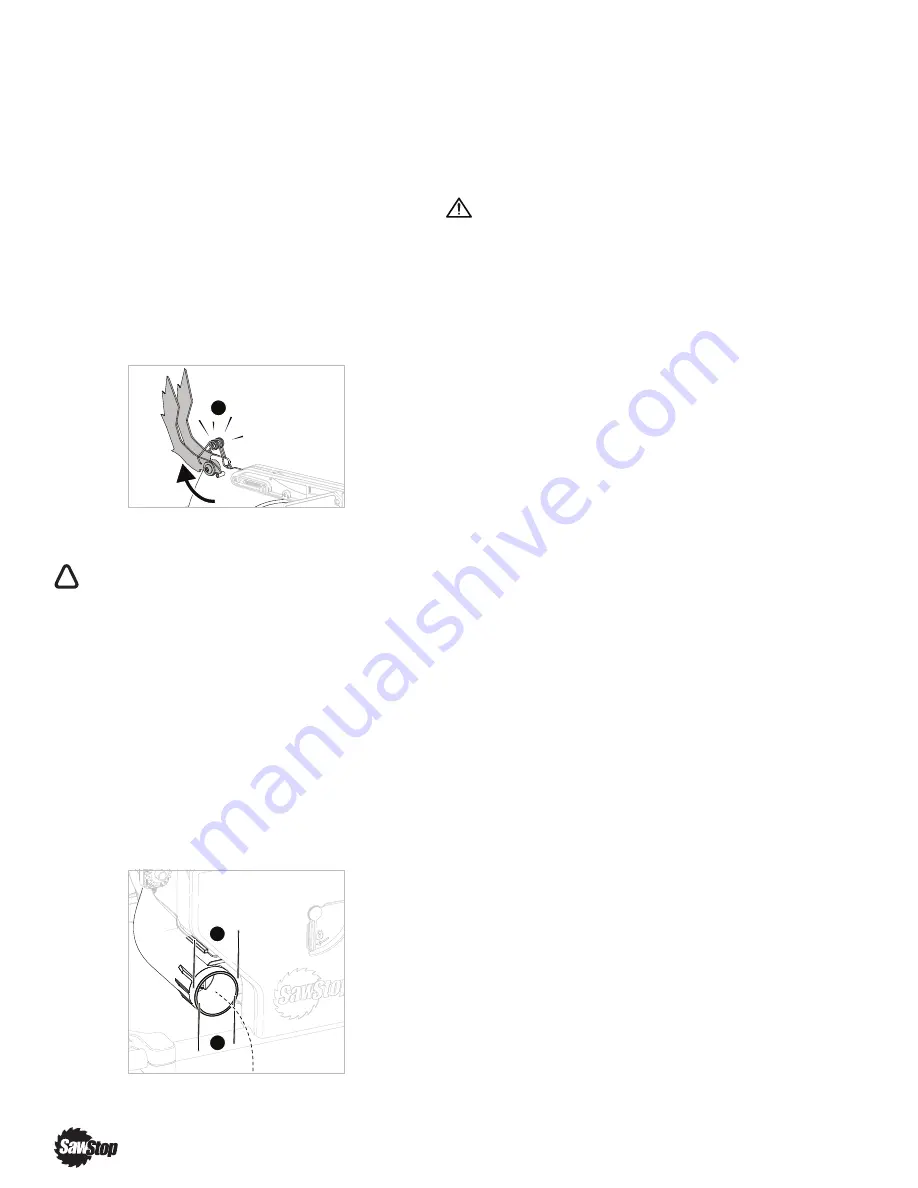
How to Disable the
Anti-Kickback Pawls
The anti-kickback pawls help reduce the chance of
kickback and potential injury or property damage.
The pawls are spring-loaded and designed to engage
the workpiece if the workpiece moves towards the
front of the saw. The pawls ride against the top of the
workpiece as you make the cut. As you finish the cut,
push the workpiece entirely past the back of the blade
and the pawls, disengaging the workpiece from the
pawls. The pawls are used for any cutting situation
where the blade guard is used. It’s also possible to
disable the pawls for exceptions as needed.
1. Rotate both pawls up until they over-center (A) and
remain in the up and disabled position. You must
rotate both pawls simultaneously.
To enable the pawls, rotate the pawls back down into
the working position.
Disable the anti-kickback pawls only for
exceptions.
How to Attach a Dust
Collector
Your Compact Table Saw uses a below-table dust
collection design; we recommend that you connect a
dust collection system to the outlet port on the dust
shroud.
Connect a dust collection system, which provides at
least 170 CFM (4800 LPM) of airflow, to the dust port
at the back of the saw. You can attach it to the outer
diameter or inner diameter of the port. The outer
diameter (A) is 2.5" (65 mm). The inner diameter (B) is
2.3" (58 mm).
Always use a dust collection system when making
cuts. Keep the system free of accumulated dust and
debris.
For more information, see:
Woodshop Dust Control
by Sandor Nagyszalanczy
Tauton Press, 2002
WARNING! Some types of dust created by
sawing, power sanding, grinding, drilling, and
other construction activities contain chemicals
known to cause cancer, birth defects or other
reproductive toxicity or harm. Some examples
of these chemicals are lead from lead-based
paints, crystalline silica from bricks, cement,
and other masonry products, and arsenic and
chromium from chemically treated lumber. In
addition, wood dust has been listed as a known
human carcinogen by the U.S. government. The
risk from exposure to these chemicals and to
dust varies depending on how often you do this
type of work. To reduce your exposure, work in
a well ventilated area and work with approved
safety equipment including dust masks or
respirators designed to filter out such dust and
chemicals.
Personal Protective
Equipment (PPE)
Always wear eye protection and ear protection when
using the saw. Use gloves when changing blades.
A
!
A
B
20
|
SawStop
®
Compact Table Saw
















































